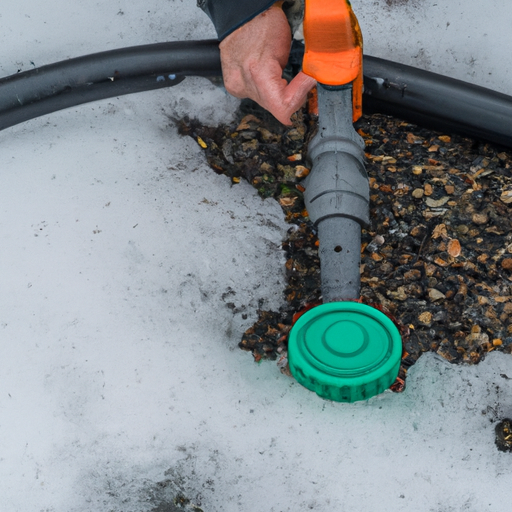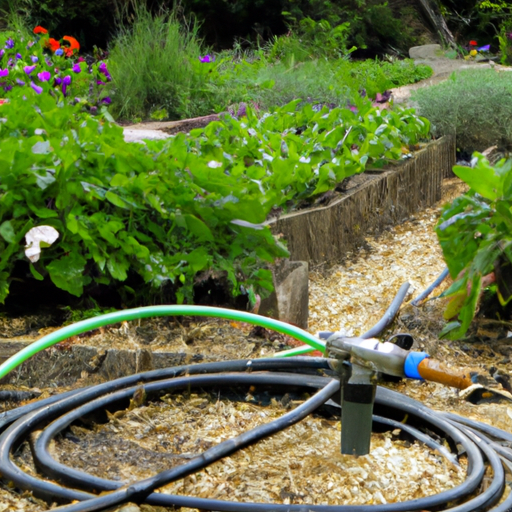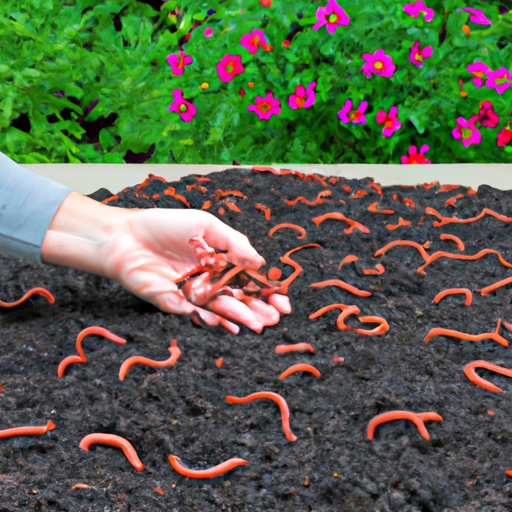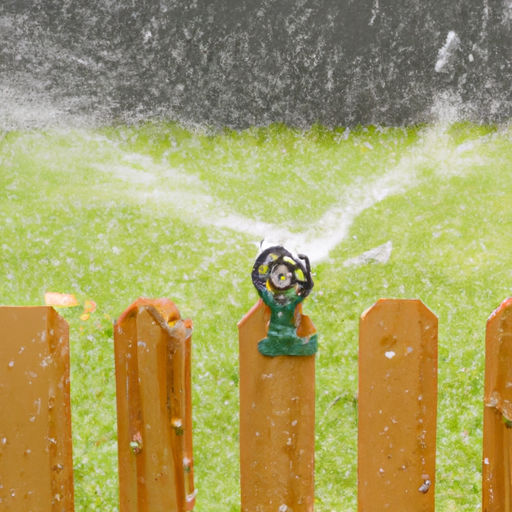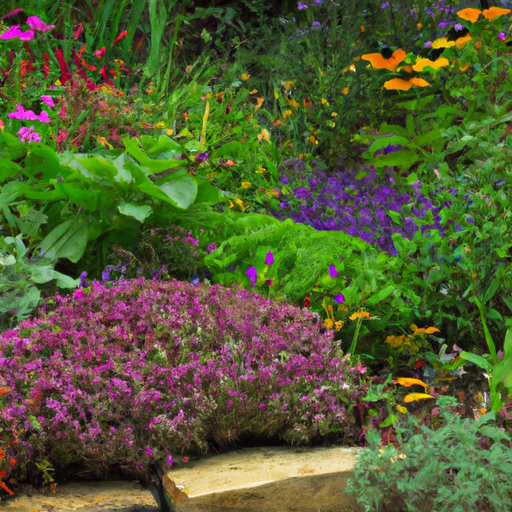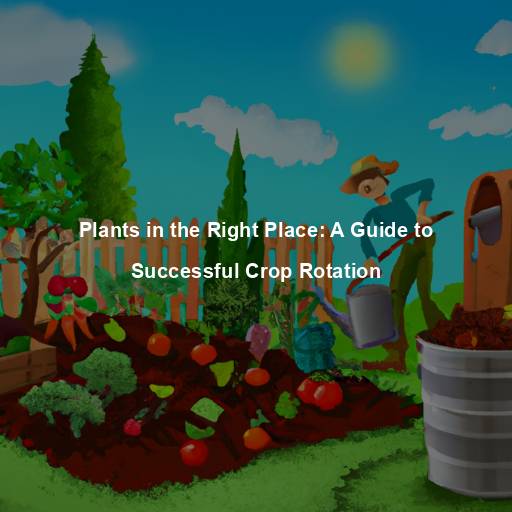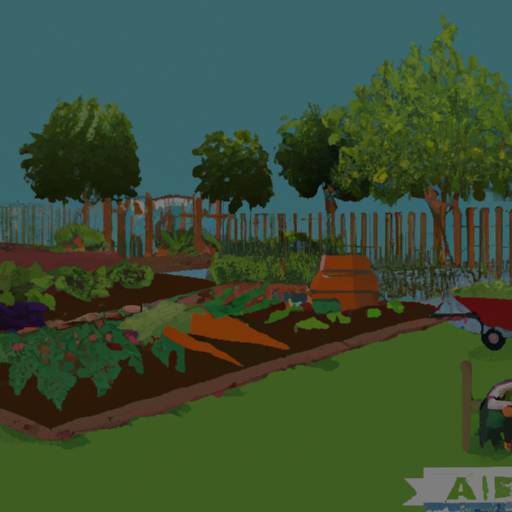Winter is coming, and with it comes the need to prepare our gardens and landscapes for the harsh weather ahead. One critical step in this process is winterizing your irrigation system. Failing to do so can result in frozen pipes, burst sprinkler heads, and costly repairs come springtime.
As a Master Gardener, I’ve seen firsthand the damage that can be caused by neglecting this essential task. That’s why I’m here to share my tips on how to properly winterize your irrigation system.
First and foremost, it’s important to understand why winterizing your irrigation system is necessary. When temperatures drop below freezing, any water remaining in your pipes will freeze and expand, causing them to crack or even burst. This not only results in costly repairs but also wastes precious water resources.
By taking the time to properly shut down your system before the first frost hits, you’ll ensure that all excess water has been drained from your pipes and valves, preventing any potential damage over the winter months. So without further ado, let’s dive into some simple steps you can take now to protect your irrigation system throughout the upcoming winter season!
Understanding The Importance Of Winterizing Your Irrigation System
As a Master Gardener, it is important to understand the benefits of winterizing your irrigation system.
Failure to do so can have serious consequences such as frozen pipes, damaged sprinkler heads, and costly repairs in the spring.
Winterizing helps protect your investment by preventing water from freezing inside your system, which causes expansion that can lead to cracks and leaks.
By taking the time to properly shut down your system before freezing temperatures arrive, you will save yourself time and money in the long run.
Don’t let neglecting this crucial step ruin all the hard work you’ve put into maintaining a healthy lawn and garden throughout the year.
Shutting Off The Water Supply And Draining Your Pipes
As the temperature drops, it’s important to protect your irrigation system from potential damage caused by freezing water. Shutting off the water supply and draining your pipes is a crucial step in winterizing your system. Think of it like putting on a warm coat before heading out in the snow – without proper preparation, you risk exposing yourself (and your pipes) to the harsh elements.
Here are four steps to help guide you through this process:
1. Locate the main shut-off valve for your irrigation system.
2. Turn off the valve to stop the flow of water into the system.
3. Open each of the valves for all zones within your system to allow any remaining water to drain out.
4. Use either the blowing out method or professional services to clear any excess water from your pipes.
By following these simple steps, you can ensure that your irrigation system remains safe and functional throughout the winter season. Don’t let frozen pipes ruin your beautiful garden – take action now and enjoy peace of mind knowing that your irrigation system is protected!
Insulating Your Backflow Preventer
Before moving on to the next step of winterizing your irrigation system, it’s essential to address backflow maintenance.
The backflow preventer is a crucial component that keeps water from flowing backward into your home’s plumbing system.
You will want to take steps to insulate this device against the cold weather.
Fortunately, there are many winterization supplies available in stores that can do just that.
One option is to purchase an insulation kit designed specifically for backflow preventers.
This kit typically includes a cover made of thick foam and straps to secure it in place.
Another option is to use heat tape around the pipes leading to and from the backflow preventer.
Regardless of which method you choose, make sure it is installed correctly and covers all parts exposed to freezing temperatures.
By taking care of your backflow preventer during winterization, you can avoid costly repairs or replacements come springtime.
Removing And Storing Sprinkler Heads
After removing the water from your irrigation system, it’s time to focus on storing and maintaining your sprinkler heads.
Here are some storing techniques you can use:
– Clean the sprinkler heads thoroughly before storage.
– Place the sprinkler heads in a dry and cool place to prevent rust formation.
– Cover them with plastic bags or containers to keep dust and debris away.
It is also important to maintain your sprinkler heads even during off-season periods.
Make sure to check for any damage or leaks regularly as this may cause issues when you start using them again.
Additionally, keeping a record of maintenance checks will help ensure that your irrigation system runs smoothly whenever needed.
By properly storing and maintaining your sprinkler heads, you’ll be able to save both time and money in the long run without any hassle!
Checking For Leaks And Damage
Now that you have drained your irrigation system and turned off the water supply, it’s time to check for any leaks or damage.
The first step is to inspect all of the sprinkler heads and make sure they are not damaged. If there are any cracks or holes in them, replace them with new ones before winter sets in.
Next, examine all exposed pipes for signs of wear and tear such as rusting or cracking. Repairing leaks now will save you time and money later on when you turn your system back on in the spring.
If you are unsure about how to repair a leak, it may be best to call in a professional for an inspection. They can identify any potential problems and fix them quickly so your irrigation system is ready for next season.
Remember, taking care of your irrigation system during the winter months will ensure that it lasts longer and works more efficiently once warmer weather arrives again.
Frequently Asked Questions
Can I Just Leave My Irrigation System As Is During The Winter?
Oh my goodness, no! Leaving your irrigation system as is during the winter would be like leaving a snowman in a sauna. It’s just not going to end well for anyone involved.
You see, there are two main methods for preparing your irrigation system for winter: blowout and drainage. Each method has its own risks and benefits that you should consider before making a decision.
As a Master Gardener, I highly recommend taking the time to properly winterize your irrigation system to avoid any potential damage or costly repairs down the road.
How Often Should I Winterize My Irrigation System?
When it comes to winterizing your irrigation system, timing is crucial. The frequency at which you should winterize your system depends on the climate in your area and the type of system you have installed.
Generally, it’s recommended to winterize before temperatures drop below freezing consistently. If you’re not sure when that might be, consult with a local master gardener or landscaping professional for advice specific to your region.
Keep in mind that waiting too long can result in costly damage and repairs come springtime. So, make sure to schedule regular maintenance before the harsh weather hits to avoid any headaches down the line!
Will Winterizing My Irrigation System Prevent All Potential Damage?
Winterization effectiveness can vary depending on the method used, but it’s important to remember that no winterization technique is foolproof.
While winterizing your irrigation system can prevent some potential damage caused by freezing temperatures, there are still alternate winterization methods you may want to consider in addition to standard practices.
As a Master Gardener, I recommend exploring different options and consulting with professionals to ensure the best protection for your irrigation system during the colder months.
Do I Need Any Special Tools To Winterize My Irrigation System?
The importance of properly winterizing your irrigation system cannot be overstated. This process not only prevents potential damage, but it also saves you money on costly repairs in the long run.
Thankfully, winterizing your system is a relatively simple task that can be completed with just a few basic tools. By following these steps, you’ll ensure that your irrigation system will function smoothly come springtime.
So don’t hesitate to invest a little bit of time and effort into this crucial maintenance task!
Can I Hire A Professional To Winterize My Irrigation System?
When it comes to winterizing your irrigation system, one question you may have is whether or not you can hire a professional to do the job.
The answer? Yes!
There are pros and cons to hiring a professional compared to doing it yourself, but ultimately it depends on your preference and budget.
Hiring a professional can save you time and effort, as well as ensure that the job is done correctly.
However, this convenience does come at a cost – typically between $50-$150 depending on the size of your system.
If you’re up for the task and want to save some money, DIY winterization is also an option with many helpful guides available online.
Conclusion
In conclusion, my fellow gardeners, I urge you to take the necessary steps to winterize your irrigation system. Don’t leave it up to chance and risk potential damage that could cost you time and money come springtime.
Trust me, as a Master Gardener, I have seen the devastation that can occur when an irrigation system is left unprotected during the harsh winter months.
So grab your tools and get to work! It may seem daunting at first, but with a little effort and some elbow grease, you can ensure that your irrigation system is ready for whatever Mother Nature throws its way this winter.
And remember, if you need assistance or prefer to hire a professional, there are plenty of options available.
Don’t let procrastination be your downfall – take action now so that you can enjoy a healthy and thriving garden next season!
